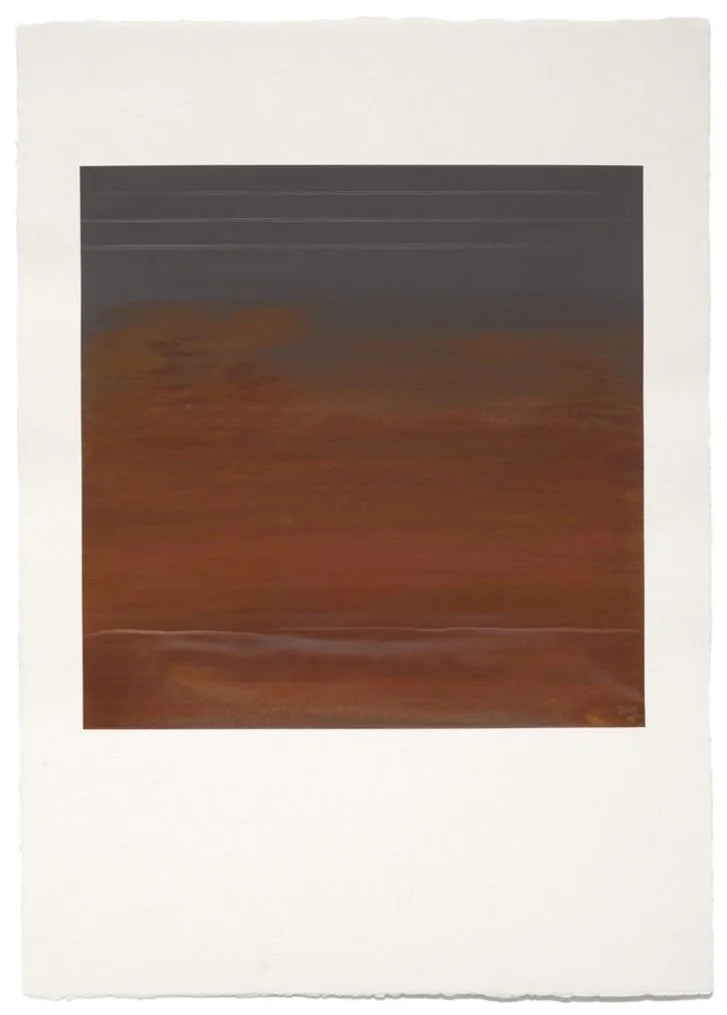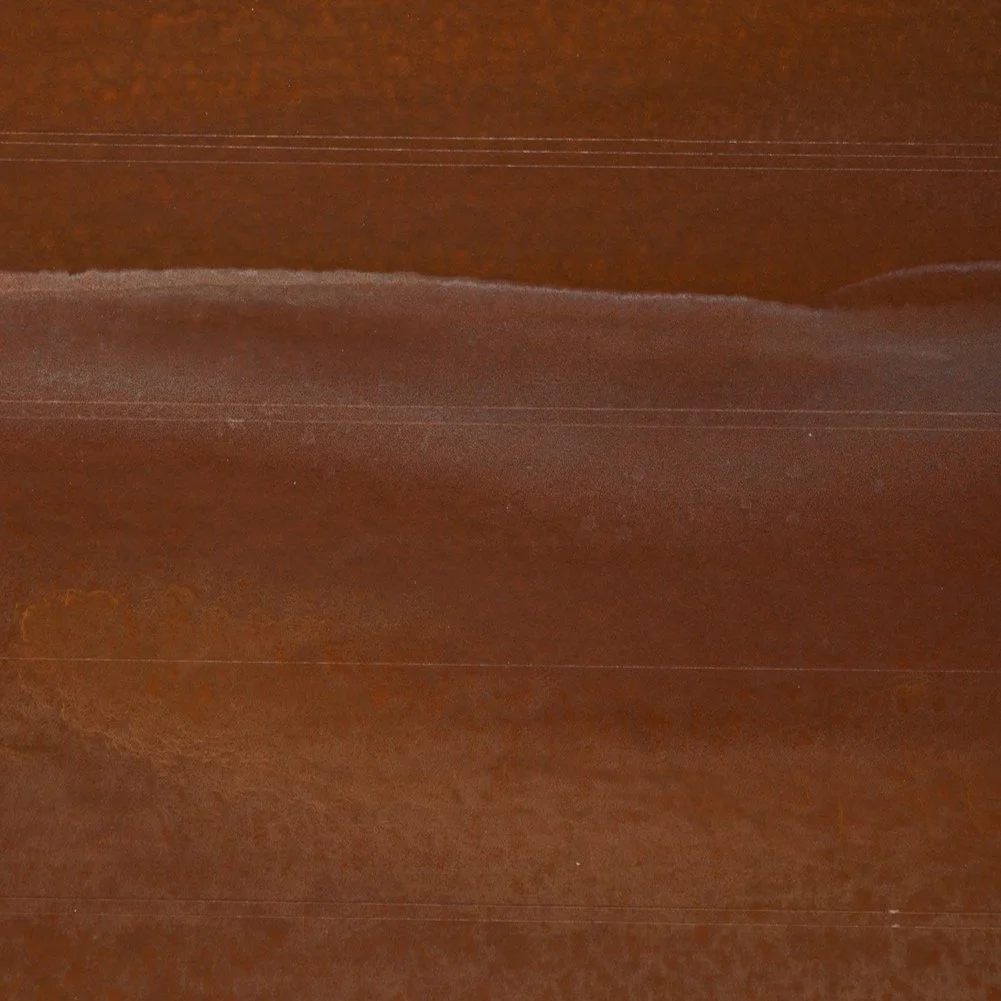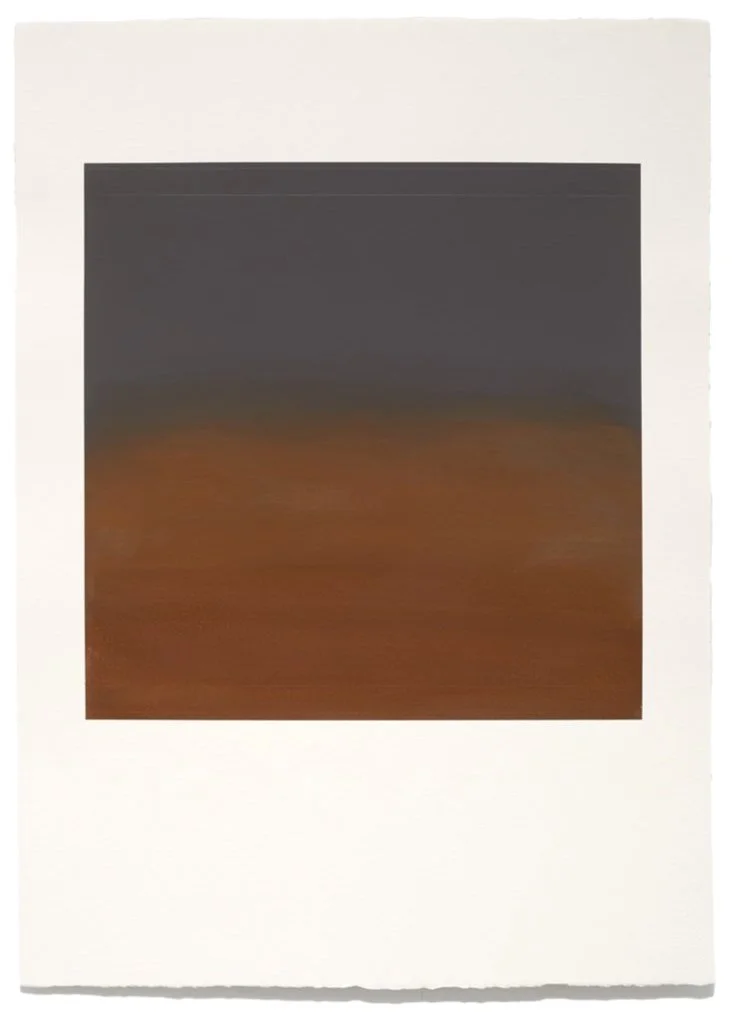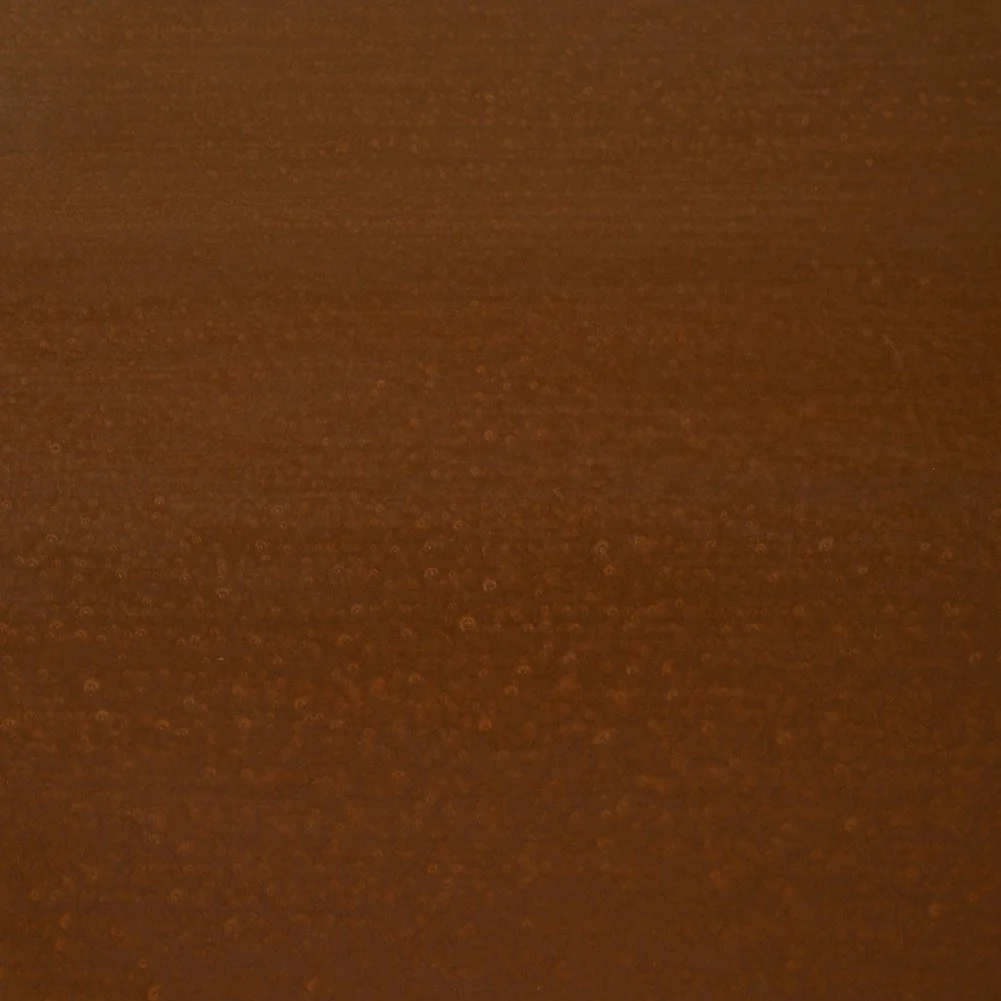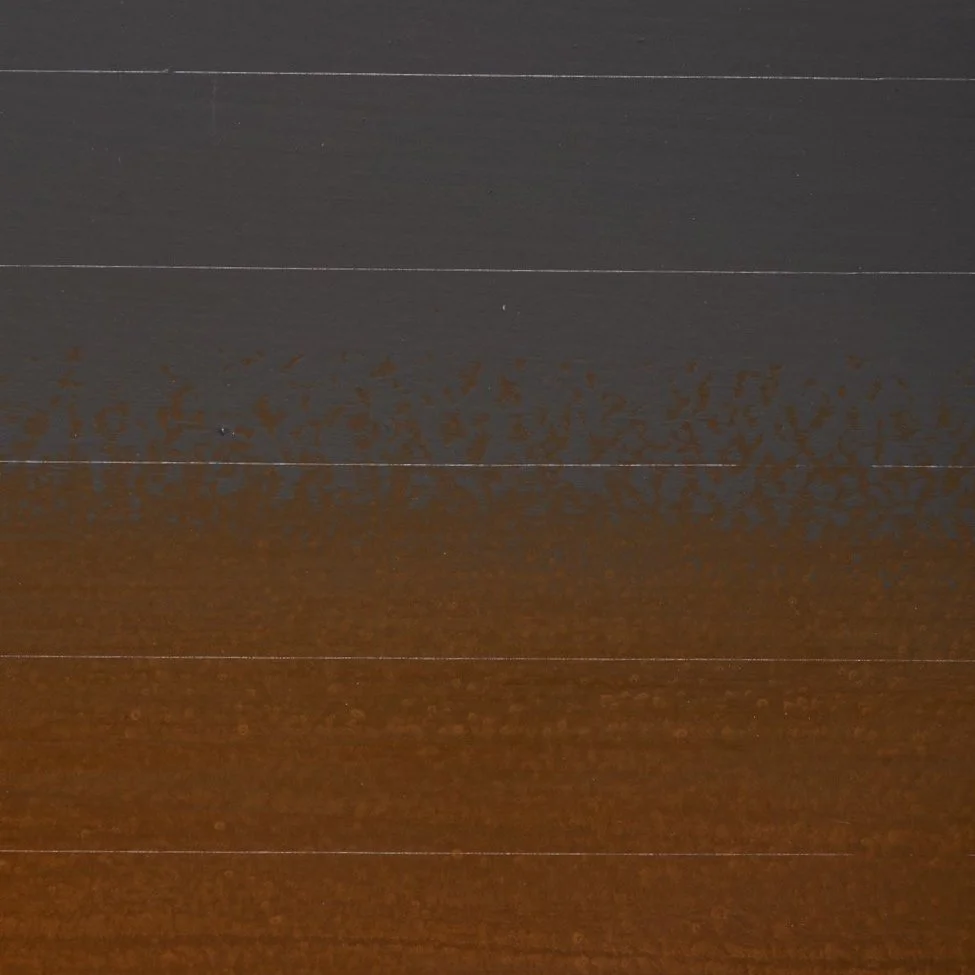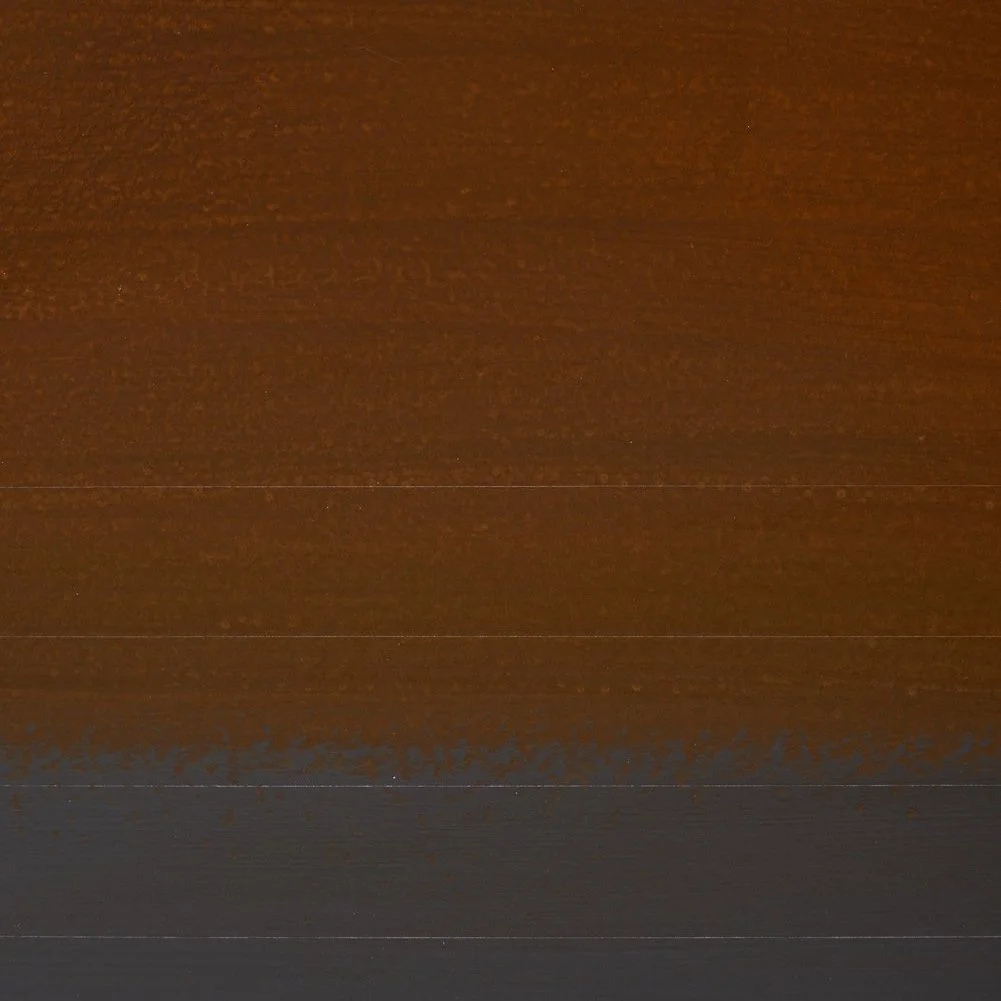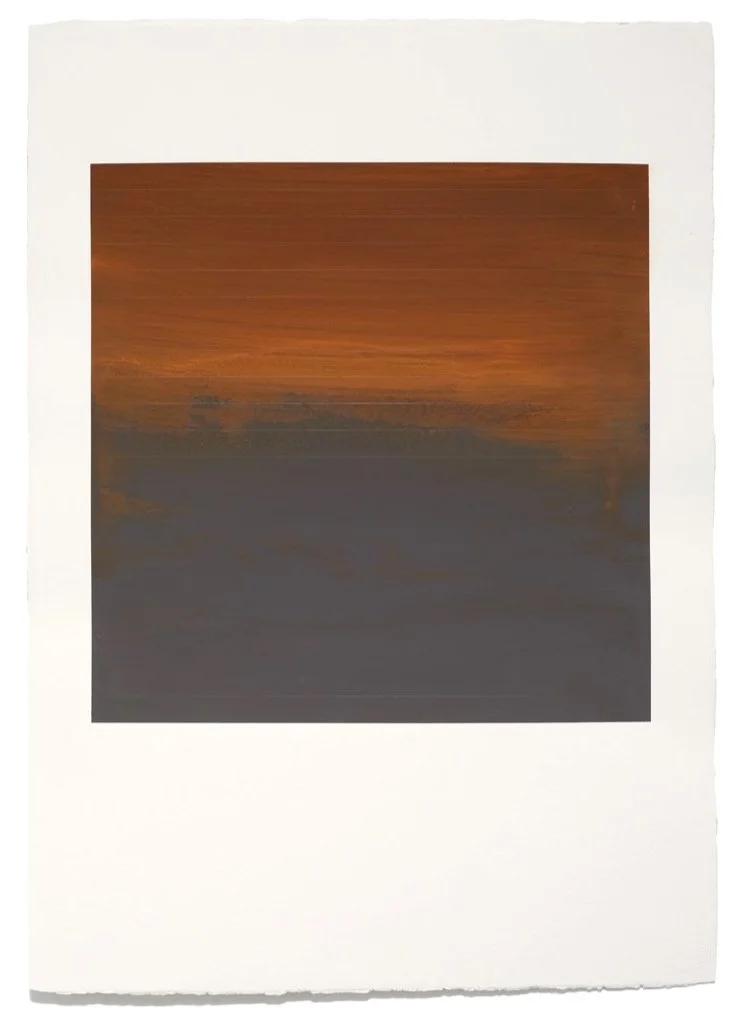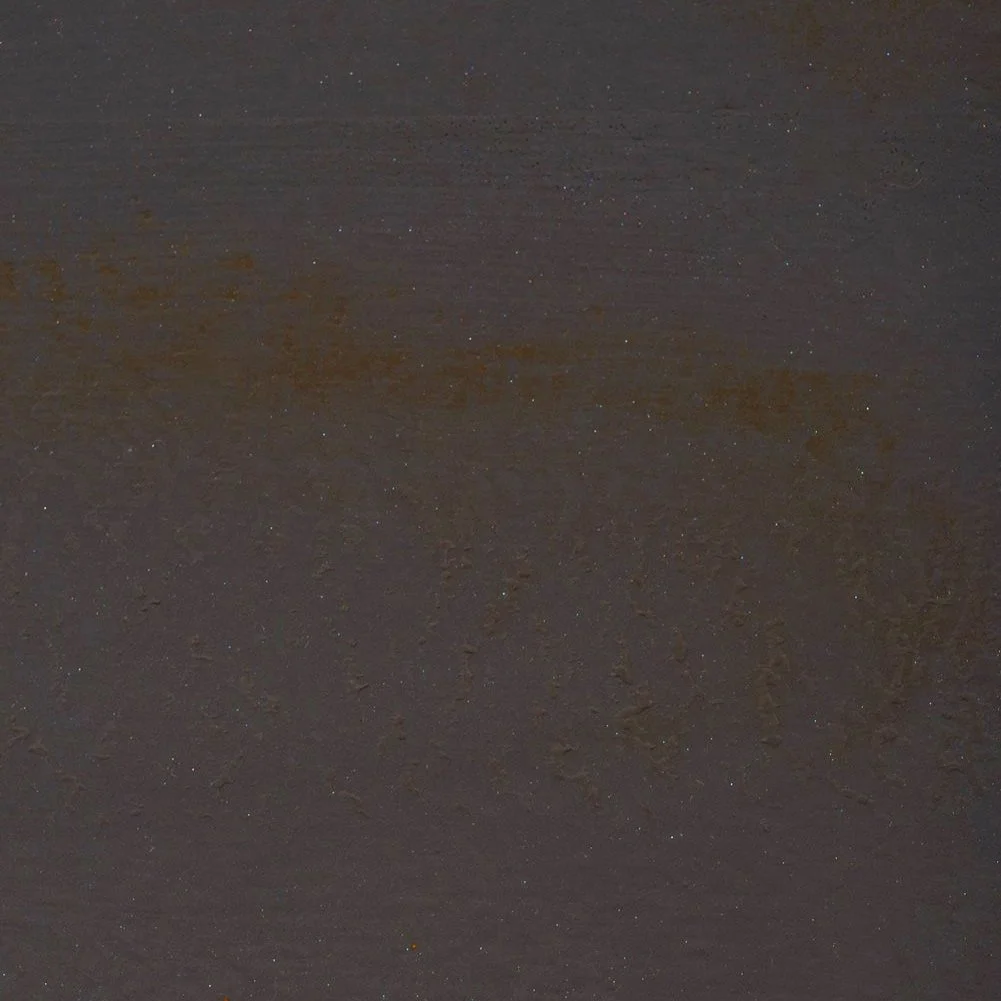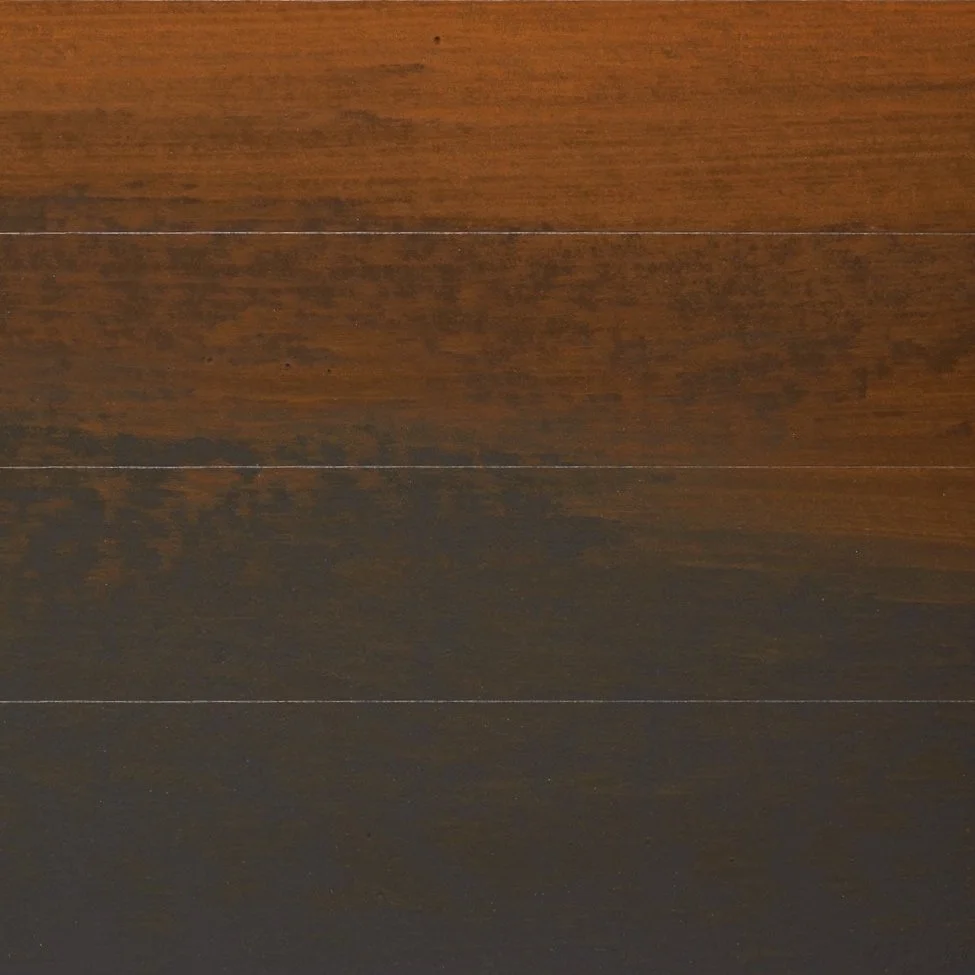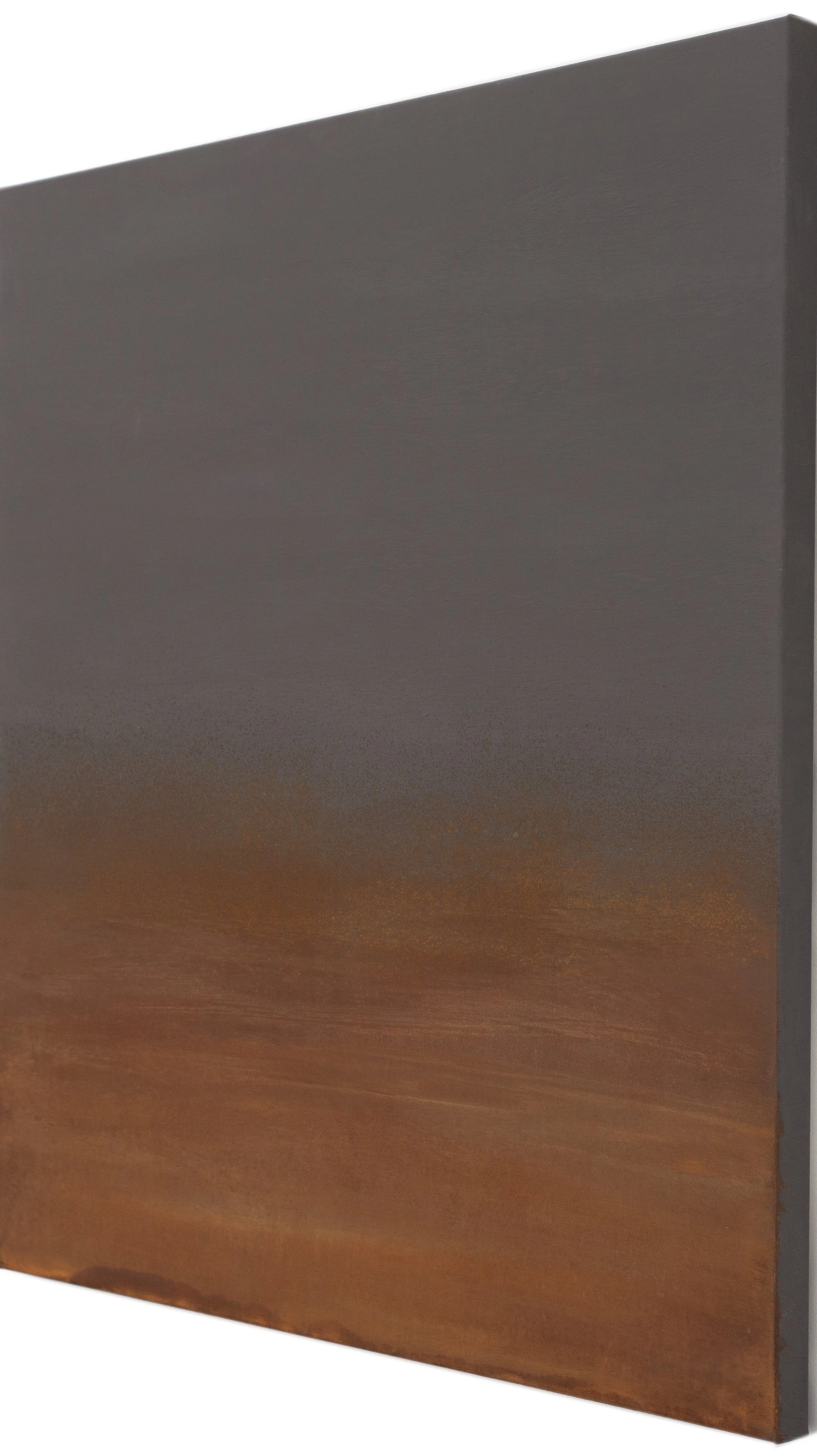Sabi (Rust)
Medium: Powdered or atomized steel applied to paper or canvas, exposed to water
Years: 2003 – ongoing
Sabi is a series that explores impermanence, natural processes, and material transformation. Powdered or atomized steel is applied to paper or canvas and exposed to water, initiating a gradual oxidation process. The surface evolves over time through the interplay of metal, air, and moisture. Rust functions simultaneously as material and index: a visible record of atmospheric conditions manifested through chemical change.
In Japanese, sabi refers to rust or the withering effects of time and forms part of the broader wabi-sabi philosophy, which honors transience, imperfection, and the subtle traces left by aging and use. Within this framework, sabi denotes how materials carry the marks of time, rendering the passage of life and natural cycles perceptible. Rather than obscuring or correcting these alterations, the work embraces them as emergent form.
The Sabi series reflects an ongoing investigation into materials as active participants that register time, atmosphere, and transformation. In line with other bodies of work such as indigo-dyed papers, fractured glass clouds, and anodized metal paintings, these pieces develop through sustained interaction with their environment alongside deliberate artistic intervention. Oxidation, weathering, and light effects remain evident on the surface, serving as direct traces of their formation. This series furthers an inquiry into impermanence and the conditions under which matter reveals its evolving nature.
